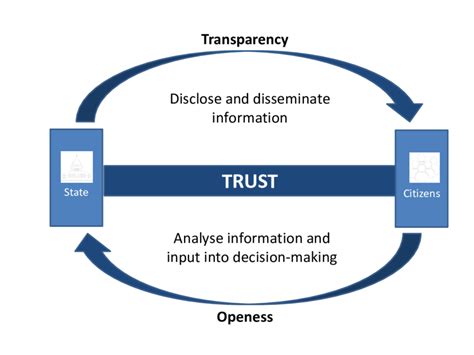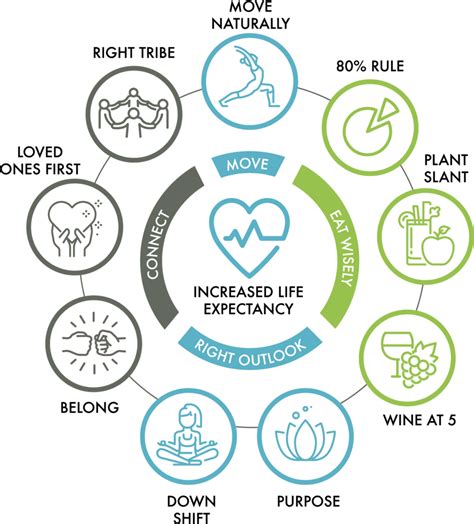
A pit bull named BlueJean sparked an online debate after a video showing her apparent dismay over another dog occupying her favorite spot on the couch went viral, highlighting the complexities of pet behavior and the bonds owners form with their animals.
Viral Video Captures Pit Bull’s Displeasure Over Stolen Couch Spot
A viral video featuring a pit bull named BlueJean has ignited a flurry of reactions online, showcasing the dog’s evident frustration at finding another canine occupying her preferred spot on the living room couch. The video, originally posted by BlueJean’s owner, captures the pit bull’s series of increasingly expressive attempts to reclaim her territory, sparking a debate among viewers about pet behavior, dominance, and the human tendency to anthropomorphize animals.
The video opens with BlueJean entering the living room and immediately spotting the interloper – another dog, seemingly oblivious to the impending conflict, comfortably nestled in BlueJean’s usual spot. What follows is a masterclass in canine passive-aggression. BlueJean begins with a series of pointed stares, directing her gaze at both the offending dog and, seemingly, at her owner, as if appealing for intervention. When the subtle approach fails to yield results, BlueJean escalates her tactics. She lets out a series of increasingly loud and dramatic sighs, each one seemingly designed to convey her utter exasperation. These sighs are punctuated by occasional nudges toward the other dog, subtle yet persistent attempts to dislodge the usurper. Throughout the entire ordeal, BlueJean maintains a carefully controlled demeanor, avoiding any outright aggression but leaving no doubt as to her displeasure.
The video’s caption, presumably written by BlueJean’s owner, adds another layer of humor to the situation. It reads, “She’s being so dramatic… but that IS her spot.” This acknowledgment of BlueJean’s perceived ownership of the couch space further resonated with viewers, many of whom admitted to recognizing similar behaviors in their own pets.
The video quickly amassed millions of views across various social media platforms, generating a wide range of reactions. Some viewers found the situation humorous, praising BlueJean’s expressive behavior and playfully accusing her of being overly dramatic. Others interpreted the video through the lens of animal behavior, debating whether BlueJean’s actions stemmed from genuine territoriality, a desire for attention, or simply a preference for a particular spot on the couch. Still others weighed in on the ethics of anthropomorphizing pets, questioning the extent to which human emotions and motivations can be accurately attributed to animal behavior.
Adding to the debate, several commenters pointed out the breed-specific stereotypes often associated with pit bulls. Some argued that BlueJean’s behavior was a harmless example of typical canine behavior, while others suggested that her breed might contribute to a perceived intensity or possessiveness. These comments sparked further discussions about responsible pet ownership, breed discrimination, and the importance of understanding individual animal personalities.
Animal behaviorists weighing in on the video suggested that while it’s impossible to know BlueJean’s exact motivations without a more thorough assessment, her behavior likely stems from a combination of factors. These factors could include learned associations with the couch spot (such as positive reinforcement from her owner), a natural preference for a comfortable and secure location, and a degree of territoriality common in many domestic animals. The experts cautioned against drawing definitive conclusions based solely on a short video clip, emphasizing the importance of considering the animal’s overall behavior, history, and social context.
The incident serves as a reminder of the complex relationships humans form with their pets. The video’s popularity highlights the human tendency to project emotions and motivations onto animals, finding humor and relatability in their perceived quirks and preferences. It also underscores the importance of understanding animal behavior and avoiding harmful stereotypes. While BlueJean’s couch drama may seem trivial on the surface, it offers a glimpse into the rich inner lives of our animal companions and the profound impact they have on our own lives.
Underlying Issues and Considerations
Beyond the immediate amusement of the viral video, the BlueJean incident raises several important issues related to pet ownership, animal behavior, and societal perceptions of certain dog breeds. A deeper examination of these issues provides a more comprehensive understanding of the significance of this seemingly simple event.
Territoriality and Resource Guarding: BlueJean’s behavior could be interpreted as a form of territoriality or resource guarding. Territoriality is a natural instinct in many animals, including dogs, and involves defending a specific area or resource from perceived threats. Resource guarding is a related behavior in which an animal becomes possessive of certain objects, such as food, toys, or, in this case, a favorite spot on the couch. While resource guarding can be a normal behavior, it can also become problematic if it leads to aggression or conflict. It’s essential for owners to recognize the signs of resource guarding and address it through appropriate training and management techniques. These may include desensitization and counter-conditioning exercises, which involve gradually exposing the dog to the presence of others near the guarded resource while rewarding calm behavior.
Anthropomorphism and Misinterpretation: The video’s popularity stems, in part, from the human tendency to anthropomorphize animals, attributing human emotions and motivations to their behavior. While it’s natural to empathize with our pets and interpret their actions based on our own experiences, it’s crucial to avoid oversimplification or misinterpretation. BlueJean’s sighs and stares may indeed indicate displeasure, but they could also be expressions of other emotions, such as anxiety, confusion, or simply a desire for attention. Accurate interpretation of animal behavior requires careful observation, knowledge of canine communication signals, and an understanding of the animal’s individual history and personality.
Breed Stereotypes and Responsible Ownership: The video also sparked discussions about breed stereotypes, particularly those associated with pit bulls. Pit bulls are often unfairly portrayed as inherently aggressive or dangerous, a perception that can lead to discrimination and breed-specific legislation. It’s important to remember that breed is not the sole determinant of behavior. Individual dogs within any breed can vary widely in temperament and personality. Responsible pit bull ownership involves providing proper training, socialization, and management to ensure the dog’s safety and the safety of others. It also involves advocating for fair and accurate representation of the breed and challenging harmful stereotypes.
The Importance of Training and Socialization: Proper training and socialization are essential for all dogs, regardless of breed. Training provides dogs with clear communication signals and helps them understand what is expected of them. Socialization exposes dogs to a variety of people, animals, and environments, helping them develop into well-adjusted and confident companions. Early socialization is particularly important, as puppies are most receptive to new experiences during their critical socialization period, which typically ends around 16 weeks of age. However, socialization can continue throughout a dog’s life, helping them adapt to new situations and maintain positive social interactions.
Addressing Underlying Anxiety: In some cases, behaviors such as resource guarding or territoriality can be indicative of underlying anxiety or insecurity. Dogs who feel anxious or insecure may be more likely to exhibit possessive behaviors as a way of maintaining control over their environment. Addressing underlying anxiety may involve identifying and mitigating stressors in the dog’s environment, providing consistent routines and structure, and using calming techniques such as classical music or aromatherapy. In severe cases, medication may be necessary to manage anxiety and improve the dog’s overall well-being. Consulting with a veterinarian or veterinary behaviorist is essential for diagnosing and treating anxiety in dogs.
The Human-Animal Bond and the Value of Companionship: Ultimately, the BlueJean video highlights the deep and meaningful bond that humans share with their animal companions. Pets provide us with unconditional love, emotional support, and endless entertainment. They enrich our lives in countless ways, and we, in turn, are responsible for providing them with the care, attention, and respect they deserve. Understanding their behavior, addressing their needs, and advocating for their well-being are all essential components of responsible pet ownership and a fulfilling human-animal relationship.
Expanding on the Significance of the Couch
The seemingly simple act of a dog claiming a spot on the couch reveals a deeper layer of significance related to comfort, security, and social hierarchy within the domestic environment. The couch, in this context, is more than just a piece of furniture; it represents a valuable resource and a symbol of belonging within the household.
Comfort and Security: For dogs, as for humans, comfort and security are fundamental needs. A comfortable spot on the couch provides a sense of relaxation, warmth, and physical well-being. The soft cushions and familiar scent of the couch can create a safe and secure environment, particularly for dogs who may experience anxiety or insecurity in other areas of the home. BlueJean’s preference for her designated spot may stem from a learned association with positive experiences, such as cuddling with her owner or enjoying a relaxing nap. The couch may also provide a vantage point from which she can observe her surroundings and monitor the activities of her human family, contributing to her sense of security.
Social Hierarchy and Resource Control: In a multi-dog household, access to desirable resources, such as food, toys, and comfortable resting places, can be a source of competition and social tension. The couch, as a prime spot for relaxation and social interaction, may become a focal point for establishing and maintaining social hierarchy. While BlueJean’s behavior in the video does not necessarily indicate a desire for dominance, it does suggest a sense of ownership and a reluctance to relinquish her claim to the couch. Her attempts to reclaim her spot, through sighs, stares, and nudges, can be interpreted as a way of asserting her position within the social structure of the household.
Learned Associations and Reinforcement: Dogs are highly attuned to learning through association. If BlueJean has consistently been allowed to occupy a particular spot on the couch, and if this behavior has been reinforced through positive attention or rewards, she will likely develop a strong preference for that spot. Her owner’s acknowledgment that “that IS her spot” further reinforces this association and solidifies her perceived ownership of the couch space. Over time, the couch becomes a conditioned stimulus, triggering a sense of anticipation and pleasure in BlueJean’s mind.
The Couch as a Social Hub: The couch often serves as a central gathering place for families, a place where people come together to relax, watch television, and engage in social interaction. By claiming a spot on the couch, BlueJean is effectively integrating herself into the social fabric of the household. She is positioning herself as a member of the family group, entitled to share in the comforts and social benefits of this central gathering place. Her desire to reclaim her spot may stem, in part, from a desire to maintain her social connection with her human family and participate in their activities.
Managing Couch Conflicts: In multi-pet households, conflicts over shared resources, such as the couch, are not uncommon. It’s important for owners to manage these conflicts proactively to prevent escalation and ensure the well-being of all animals. This may involve providing each pet with their own designated resting places, implementing rules and boundaries regarding access to the couch, and using positive reinforcement techniques to encourage peaceful coexistence. In some cases, consulting with a professional dog trainer or behaviorist may be necessary to address underlying behavioral issues and develop a customized management plan.
The Role of the Owner: The owner plays a crucial role in mediating conflicts and managing resource allocation within the household. By setting clear expectations, providing consistent training, and intervening fairly in disputes, the owner can help to establish a stable social hierarchy and prevent conflicts from escalating. In the case of BlueJean and her couch drama, the owner’s response will likely influence future interactions and shape the dogs’ perception of resource control. A fair and consistent approach, such as redirecting the other dog to a different resting place or providing both dogs with equal access to the couch, can help to maintain harmony and prevent future conflicts.
The Broader Context of Canine Cognition
The BlueJean video, while seemingly lighthearted, touches upon broader themes in canine cognition and the ongoing debate about the extent to which dogs understand and experience the world around them. Recent research in canine neuroscience and behavior has shed new light on the cognitive abilities of dogs, challenging long-held assumptions and revealing a more nuanced understanding of their mental lives.
Understanding Canine Emotions: For many years, it was widely believed that dogs were incapable of experiencing complex emotions, such as jealousy, pride, or guilt. However, recent studies have shown that dogs possess a wide range of emotional capacities, albeit perhaps not in the same way as humans. Brain imaging studies have revealed that dogs’ brains respond to emotional stimuli in ways that are remarkably similar to human brains. For example, studies have shown that dogs experience positive emotions, such as joy and excitement, when they interact with their owners or receive rewards. They also experience negative emotions, such as fear, anxiety, and sadness, in response to stressful or aversive situations. While the precise nature of canine emotions is still being investigated, it is clear that dogs are capable of experiencing a rich and complex emotional life.
Canine Social Cognition: Dogs are highly social animals, and their cognitive abilities are shaped, in part, by the need to navigate complex social environments. Dogs possess a sophisticated understanding of social cues, such as body language, facial expressions, and vocalizations, and they use these cues to interpret the intentions and emotions of other dogs and humans. They are also capable of learning social rules and hierarchies, and they can adapt their behavior accordingly. Studies have shown that dogs can recognize individual humans and dogs, they can remember past interactions, and they can even engage in forms of social cooperation.
The Limits of Anthropomorphism: While it is natural to empathize with our pets and interpret their behavior based on our own experiences, it is important to avoid excessive anthropomorphism. Attributing human emotions and motivations to dogs without considering their unique cognitive abilities can lead to misunderstandings and misinterpretations. Dogs’ brains are structured differently from human brains, and they process information in different ways. While they may experience emotions similar to our own, they may not understand the world in the same way we do. It is crucial to approach the study of canine cognition with a balance of empathy and scientific rigor, recognizing the limitations of our own perspectives and striving to understand dogs on their own terms.
The Role of Genetics and Environment: Canine cognition is shaped by a complex interplay of genetic and environmental factors. Genes influence the structure and function of the brain, as well as the dog’s temperament and predispositions. Environment, including early socialization, training, and life experiences, can further shape cognitive development and behavior. Different breeds of dogs have been selectively bred for different cognitive abilities, such as herding, hunting, or guarding. However, individual dogs within any breed can vary widely in their cognitive abilities due to genetic variation and environmental influences.
The Future of Canine Cognition Research: Research in canine cognition is a rapidly growing field, with new studies constantly revealing new insights into the minds of dogs. Future research will likely focus on exploring the neural mechanisms underlying canine cognition, investigating the role of genetics and environment in shaping cognitive abilities, and developing new methods for assessing and enhancing canine cognitive performance. A deeper understanding of canine cognition will not only benefit dogs, by improving their welfare and strengthening their relationships with humans, but will also contribute to our broader understanding of animal intelligence and the evolution of cognition.
Ethical Considerations in Pet Ownership
The BlueJean incident also serves as a reminder of the ethical responsibilities that come with pet ownership. Owning a pet is not simply a matter of providing food and shelter; it is a commitment to ensuring the animal’s physical and emotional well-being, respecting its individual needs and preferences, and providing it with a fulfilling and meaningful life.
Meeting the Animal’s Needs: Responsible pet ownership involves meeting the animal’s basic needs, including providing adequate food, water, shelter, and veterinary care. It also involves providing opportunities for exercise, mental stimulation, and social interaction. Different species and breeds have different needs, and it is important for owners to be knowledgeable about the specific requirements of their pets. For example, dogs require regular exercise and socialization to prevent boredom and behavioral problems, while cats require opportunities to engage in natural hunting behaviors, such as climbing and scratching.
Respecting the Animal’s Autonomy: Animals are sentient beings with their own individual desires, preferences, and needs. Responsible pet ownership involves respecting the animal’s autonomy and allowing it to make choices whenever possible. This may involve providing the animal with options regarding its environment, such as allowing it to choose where to sleep or what toys to play with. It also involves avoiding coercive training methods that rely on punishment or fear, and instead using positive reinforcement techniques that reward desired behaviors.
Avoiding Anthropomorphism and Exploitation: While it is natural to empathize with our pets, it is important to avoid excessive anthropomorphism and exploitation. Animals should not be treated as objects or commodities, but rather as individuals with their own intrinsic value. This means avoiding activities that are harmful or degrading to the animal, such as dressing them in costumes, forcing them to perform tricks against their will, or breeding them for purely aesthetic reasons.
Advocating for Animal Welfare: Responsible pet ownership extends beyond the individual animal to encompass broader issues of animal welfare. This may involve supporting organizations that work to protect animals from cruelty and neglect, advocating for stronger animal protection laws, and promoting responsible breeding practices. It also involves educating others about the importance of animal welfare and encouraging them to adopt ethical and compassionate attitudes towards animals.
The Role of Legislation: Animal welfare is increasingly recognized as a matter of public concern, and many countries have enacted legislation to protect animals from cruelty and neglect. These laws typically address issues such as animal cruelty, neglect, abandonment, and the regulation of animal breeding and sales. While legislation can play an important role in protecting animal welfare, it is not a substitute for individual responsibility. Owners have a moral obligation to treat their pets with respect and compassion, regardless of whether or not they are required to do so by law.
The Future of Pet Ownership: The future of pet ownership will likely be shaped by increasing awareness of animal welfare issues, advances in veterinary medicine and animal behavior research, and changing social attitudes towards animals. As we learn more about the cognitive and emotional capacities of animals, we will be better equipped to provide them with the care and respect they deserve. Responsible pet ownership will become increasingly recognized as a fundamental ethical obligation, and animals will be viewed as valued members of society, entitled to live fulfilling and meaningful lives.
Frequently Asked Questions (FAQ)
-
Was BlueJean aggressive towards the other dog?
No, according to the article, BlueJean did not exhibit any outright aggression. Her actions were described as “passive-aggressive,” involving sighs, stares, and nudges rather than biting or growling.
-
Why did BlueJean react so strongly to another dog being on her spot?
Animal behaviorists suggest it could be due to territoriality, learned associations with the couch spot (positive reinforcement), a preference for a comfortable location, or a combination of these factors.
-
Is it common for dogs to be territorial about certain spots or items?
Yes, territoriality and resource guarding are common canine behaviors. Dogs may become possessive of food, toys, or specific locations.
-
Are pit bulls inherently more aggressive or territorial than other breeds?
The article emphasizes that breed stereotypes are often inaccurate. Individual dogs vary in temperament, and responsible pit bull ownership focuses on training and socialization. Breed is not the sole determinant of behavior.
-
What should I do if my dogs are fighting over a spot on the couch or other resources?
The article suggests providing designated resting places for each pet, establishing rules regarding access to shared resources, and using positive reinforcement to encourage peaceful coexistence. Consulting a professional dog trainer or behaviorist may be necessary for persistent conflict.









